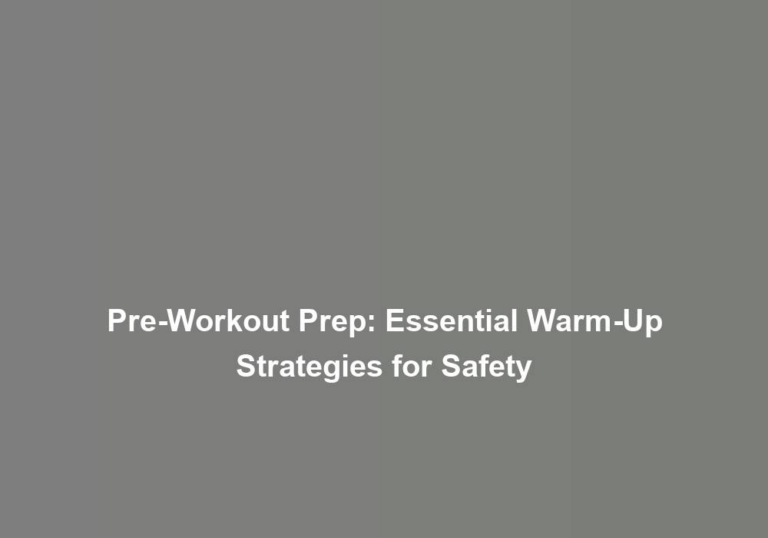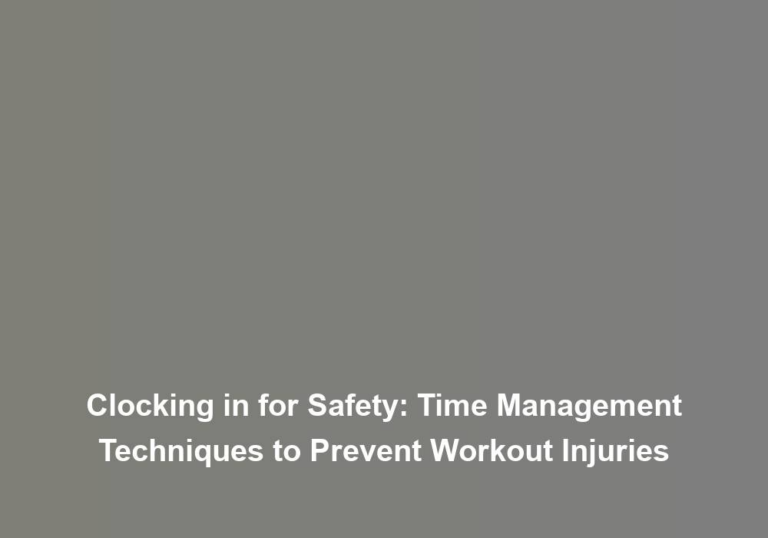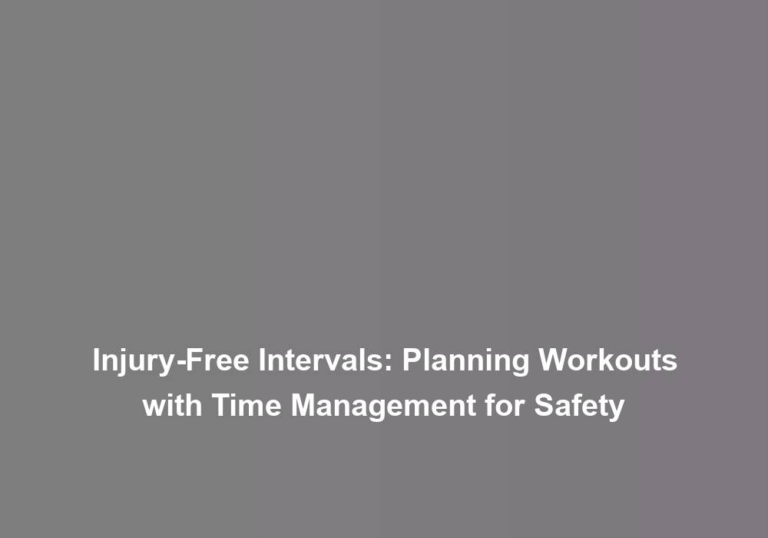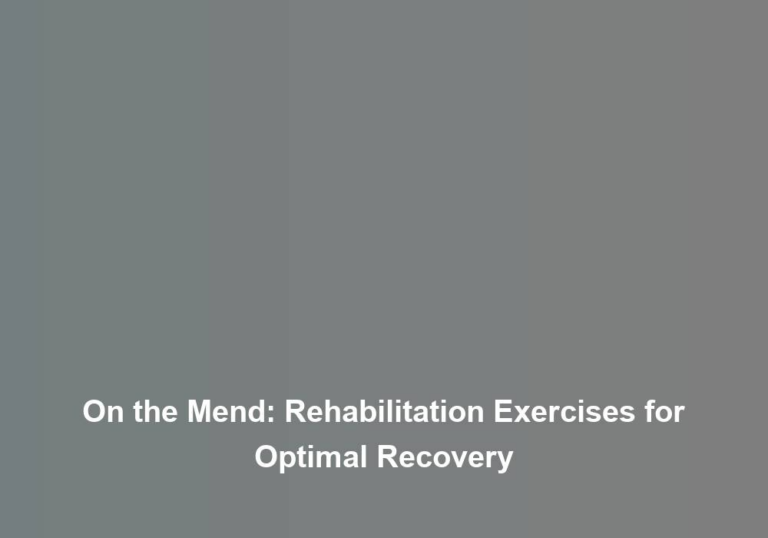Recovery Roadmap: Tailored Rehabilitation Exercises for Athletes
You know that about 8.6 million sports and recreation-related injuries occur each year in the United States. As an athlete, recovering from an injury can be a daunting process, but it doesnG??t have to be. Tailored rehabilitation exercises can make a significant difference in your recovery journey, helping you regain strength, flexibility, and endurance while reducing the risk of re-injury. Whether youG??re a professional athlete or someone who simply enjoys staying active, understanding the personalized roadmap to recovery can be the key to getting back to doing what you love.
Understanding the AthleteG??s Injury
To understand the athleteG??s injury, it is crucial to assess the specific mechanisms and factors that led to the injury, in order to develop an effective rehabilitation plan. Injury assessment involves a comprehensive evaluation of the nature and extent of the injury, including its underlying causes. This assessment typically includes a detailed physical examination, diagnostic imaging such as X-rays or MRI scans, and in some cases, specialized tests to determine the severity and scope of the injury. Understanding the injuryG??s root cause is essential for devising a targeted and personalized rehabilitation program that addresses the specific impairments and limitations resulting from the injury.
Recovery timelines for athletes can vary significantly depending on the type and severity of the injury. Factors such as the athleteG??s overall health, age, and adherence to the rehabilitation program can also impact the recovery timeline. For example, a minor muscle strain may only require a few weeks of rehabilitation, while a complex ligament tear or fracture could necessitate several months of intensive rehabilitation. The recovery timeline is not only about the physical healing process but also considers the athleteG??s psychological readiness to return to sport. It is essential to recognize that adhering to a structured rehabilitation program, following medical advice, and allowing adequate time for the injury to heal are crucial elements in determining the recovery timeline for an athlete.
Tailoring Rehabilitation Exercises
Tailoring rehabilitation exercises for athletes involves customizing the physical therapy program to address their specific injury, functional limitations, and athletic goals. Custom exercises are designed to target the individual athleteG??s injury, taking into account the nature and severity of the injury. An individualized approach ensures that the rehabilitation exercises are tailored to the athleteG??s unique needs, which ultimately leads to more effective outcomes.
Injury-specific rehabilitation is a key component of tailoring exercises for athletes. By focusing on the specific injury, targeted progressions can be implemented to promote healing and recovery. This may involve exercises that address muscle imbalances, flexibility, strength, and proprioception, all of which are crucial for the athlete to regain optimal function and performance.
The tailored rehabilitation exercises also consider the athleteG??s functional limitations. These exercises are designed to improve the athleteG??s ability to perform daily activities and, ultimately, return to their sport. By addressing functional limitations, the rehabilitation program aims to enhance the athleteG??s overall quality of life.
Furthermore, the athleteG??s athletic goals play a significant role in the customization of rehabilitation exercises. Whether the athlete aims to return to competitive sports or recreational activities, the exercises are tailored to help them achieve their specific athletic aspirations.
Building Strength and Flexibility
When building strength and flexibility for athletes during rehabilitation, it is essential to incorporate targeted exercises that address specific muscle groups and movement patterns related to the athleteG??s injury and athletic goals. Strength training plays a crucial role in an athleteG??s recovery process. It not only helps in regaining muscle strength and endurance but also in preventing future injuries. When designing a strength training program, it is important to focus on progressive overload, ensuring that the athleteG??s muscles are continually challenged to promote growth and recovery.
Flexibility techniques are equally important in an athleteG??s rehabilitation journey. Incorporating dynamic and static stretching exercises can help improve the athleteG??s range of motion, reduce muscle tension, and enhance overall mobility. It is essential to tailor these flexibility exercises to target the specific muscles and joints affected by the injury, promoting proper healing and preventing stiffness.
Integrating exercises that promote both strength and flexibility, such as yoga or Pilates, can be highly beneficial for athletes during rehabilitation. These exercises not only aid in building core strength but also focus on improving balance, stability, and flexibility, which are essential for an athleteG??s overall performance and injury prevention.
Progressing Endurance Training
As you progress into the endurance training phase, itG??s important to build upon the strength and flexibility gained in previous rehabilitation exercises, ensuring a comprehensive approach to your athletic recovery. Endurance training is crucial for rebuilding stamina and cardiovascular fitness after an injury. HereG??s how you can effectively progress your endurance training:
-
Intensity Adjustment: Gradually increase the intensity of your workouts to challenge your body and promote improvement. This can be done through longer training sessions, higher resistance, or faster pace. However, itG??s essential to monitor your progress closely and avoid pushing too hard, as this may lead to setbacks in your recovery.
-
Individualized Modifications: Work with your physical therapist or coach to make personalized modifications to your endurance workouts. Tailoring the exercises to your specific needs and abilities can help prevent further injury and ensure that you are progressing at a safe and effective pace.
-
Personalized Workouts: Incorporate a variety of endurance exercises that are tailored to your sport and individual goals. This could include activities such as swimming, cycling, or running, depending on the demands of your sport and the stage of your recovery.
-
Monitoring Progress: Keep detailed records of your workouts, noting improvements in endurance, speed, and overall performance. This will allow you to track your progress and make necessary adjustments to your training program.
Preventing Re-Injury With Proper Conditioning
To prevent re-injury and promote long-term athletic success, proper conditioning is essential for athletes recovering from an injury. Injury prevention is a critical aspect of an athleteG??s rehabilitation journey, and conditioning techniques play a pivotal role in reducing the risk of re-injury. One of the most effective conditioning techniques for injury prevention is strength training. This involves exercises that target the specific muscles and areas affected by the injury, helping to rebuild strength and stability. Additionally, incorporating flexibility and mobility exercises into the conditioning program can enhance the bodyG??s ability to move freely and efficiently, reducing the likelihood of future injuries.
Another crucial aspect of preventing re-injury is addressing any underlying biomechanical issues. This involves analyzing the athleteG??s movement patterns and making adjustments to correct any imbalances or weaknesses that may have contributed to the initial injury. By addressing these issues through targeted conditioning exercises, athletes can significantly reduce the risk of re-injury. Furthermore, integrating functional training, which focuses on replicating the specific movements and demands of the athleteG??s sport, can further enhance their ability to perform without experiencing setbacks.
ItG??s important to note that proper conditioning for injury prevention should be tailored to the individual athleteG??s needs and should be guided by a qualified sports rehabilitation professional. By implementing a comprehensive conditioning program that addresses strength, flexibility, mobility, biomechanics, and sport-specific demands, athletes can significantly reduce the risk of re-injury and lay the foundation for long-term athletic success.
Conclusion
In conclusion, when athletes receive tailored rehabilitation exercises, their recovery time significantly decreases. In fact, studies have shown that athletes who engage in personalized rehab programs reduce their recovery time by up to 50%. This means that athletes can get back to doing what they love faster and with a reduced risk of re-injury. By understanding the athleteG??s injury, tailoring exercises, and focusing on building strength and flexibility, we can help athletes achieve optimal recovery and performance.







